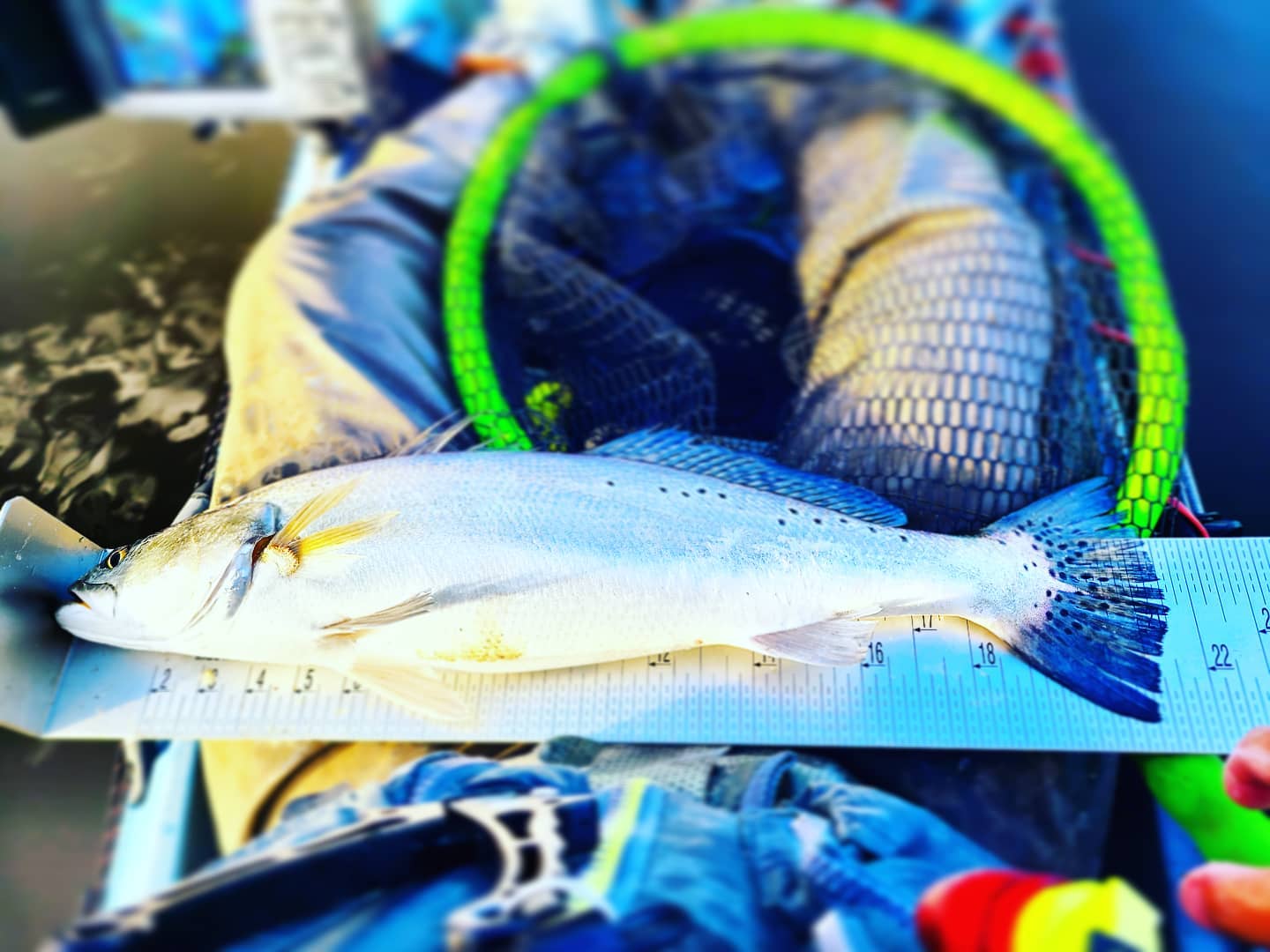Deep Water
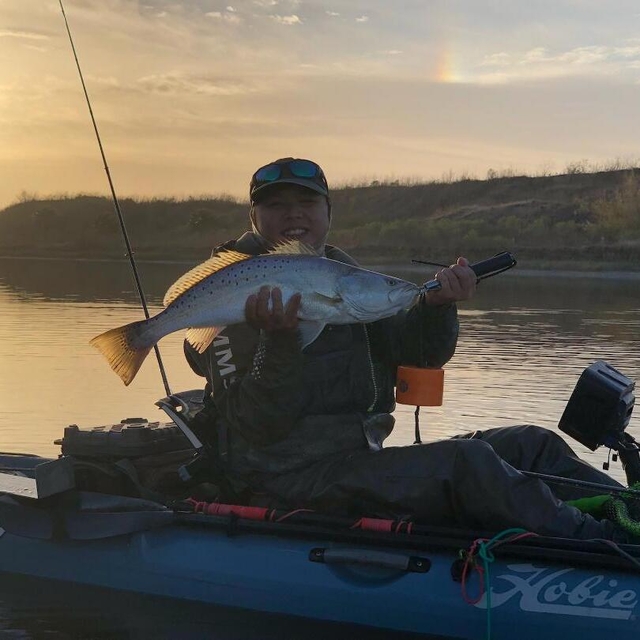
The most obvious answer is deep water. With Galveston being a relatively shallow bay system, your first thought for deep water is probably the shipping channels. While they are not a bad idea, I personally look for water that is deeper than the surrounding area. For example, the flats around San Luis Pass are around 1 to 2 feet. Throughout those flats, there are a series of interconnected guts that run anywhere from 4 to 10 feet. During cold snaps, fish will dive into these deeper areas to seek refuge. As long as there is something like that nearby, you’ll have an increased chance of catching fish.
The reason why I look for water that is deeper than the surrounding area because it opens up so many opportunities. Fish need deeper water to escape the cold. Something as small as a few feet difference in a gut can be the difference between finding a productive winter spot to a completely dead zone. As always, you’ll also need to be on the lookout for bait as an indicator of how productive the area can be. Either way, if you find an area that is deeper than the surrounding area, keep that in mind. You never know how productive it can turn out in the end.
Structure
Another seemingly obvious answer is structure. Whether it is an oyster reef or some underwater pilings, structure in the area is a big plus in helping you locate productive winter zones for fishing in Galveston. How do you locate structure? If you haven’t been using Google Maps or even Bing Maps, you are missing out! Using their satellite overlay, you have a plethora of data available. You’ll be able to pick out grass flats, oyster reefs, man-made structures, more. While you won’t be able to see the structure that is deep underwater (unless the water is clear enough when the image was taken), you’ll still see a majority of the structure in shallow water. From there, you can inferences on objects in deeper water for the area.
Grass Flats
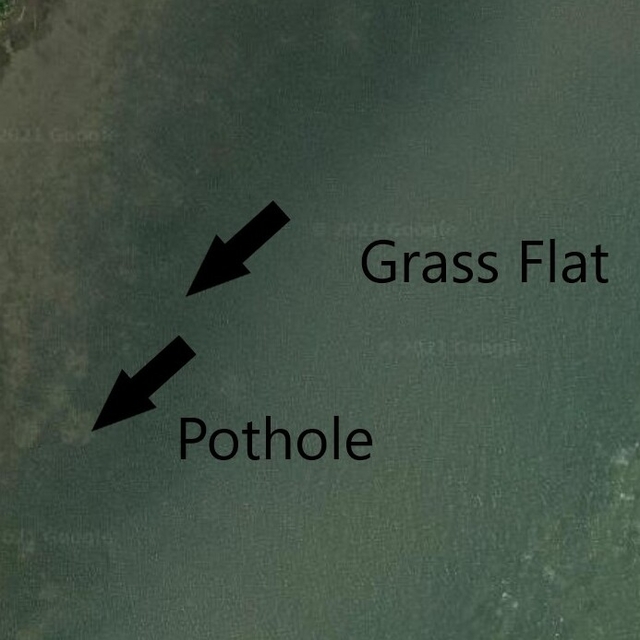
It may be tough to see, but here is a good example of identifying grass and grass flats. The darker blotches in this shallow water are the grass while the light and tan portions are exposed sand (also known as potholes). Personally, I fish a lot of these grass flats during the warmer months, grass flats are perfect areas to target during warming trends when fish move up out of the deeper water to feed. Again, preferably, you would want to target the grass flats that are adjacent to deeper water.
Oyster Reefs
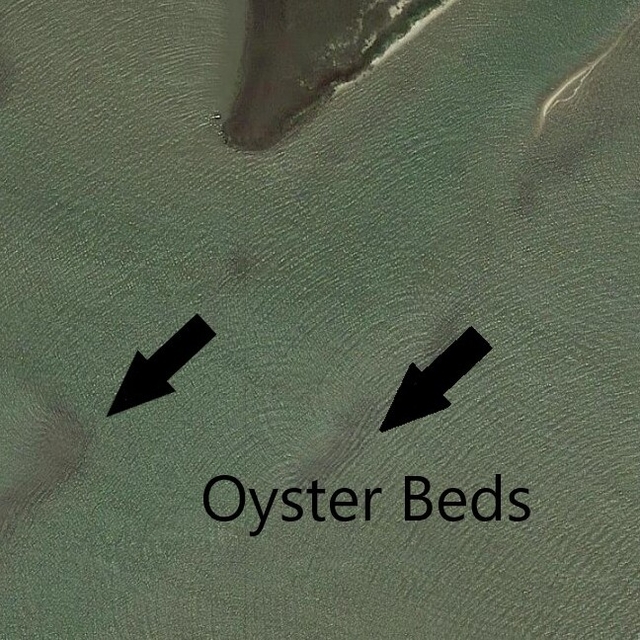
If you find oyster reefs, you’ll probably find the fish. They show up as dark blotches in the water. Also, considering how widespread these oyster reefs are, you can expect them to stretch further out in the deeper water. In fact, you should also be able to see the channel or gut between these oyster reefs with the darker colored water. Combining these two factors makes this a great location to target.
Guts/ Deeper Water
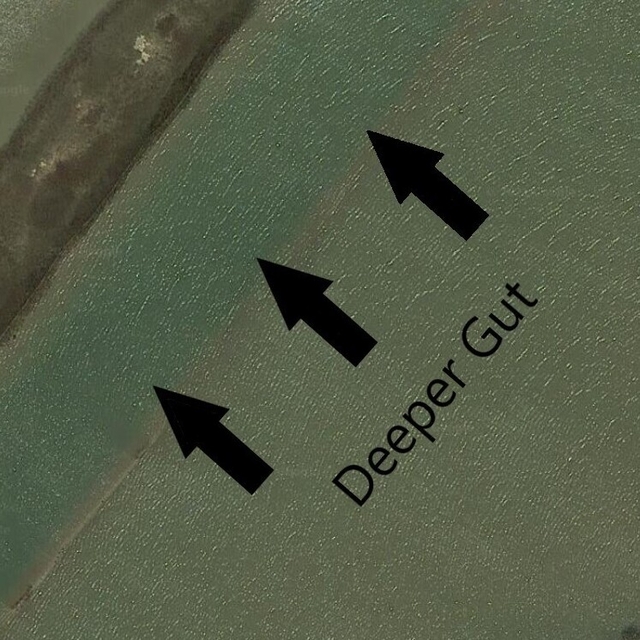
Considering that Galveston Bay is relatively shallow, it is easy to find guts and deeper water. This channel is shored up by sand bars, but you can easily see the deeper water with its darker color. Besides the middle of the gut where fish may hang out, you’ll also be able to target the drop-offs and edges. Combine it with other structures such as grass or oyster reefs, and you’ll have yourself a potentially productive location.
Mud
This one is not as obvious. Mud can play an important part in finding productive areas to fish during the winter in Galveston. Why mud? Mud tends to retain heat better than sand. After a cold spell, fish will actually lay or even partially bury themselves in mud to keep warm. This is evidenced by fish with muddy bellies during the winter months. Think of mud being a heated blanket. With the bluebird skies beating down on the water after a front, the mud will stay warm and cozy for many fish. So, if your area has mud, it may be worthwhile to check out. Now, you may be asking “how do I know if the area has mud?” This is where it gets tricky. If you are in shallow water where your anchor pole can touch the bottom, that is a sure-fire way to check. If you are in deeper water, you may have to rely on your knowledge of the area.
Combining Deep Water, Structure, and Mud
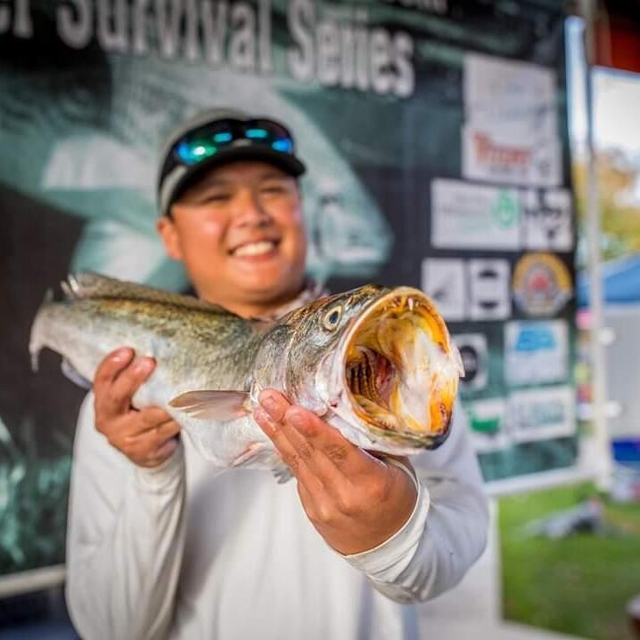
Each individual factor is an important piece to finding good winter fishing in Galveston. However, the best areas contain the trifecta of all three. Theoretically, you want an area that has deep water access, structure, and mud. This gives you the best chance to find fish on those cold winter days. Fish can be up shallow hanging around the mud and shell (structure), be deep in a channel next to an oyster reef, or even somewhere between. By targeting all three of these, you are sure to find yourself some good areas to fish.
One last thing that you’ll need is some time. Finding all of these things and experiencing it for yourself takes time. Guides are a good way to reduce that time. But overall, nothing beats just going out and being on the water. Have a question that you want to be answered? Send me a message and I may make a post about it. Also, stay tuned as I will be introducing a podcast really soon to further help anglers fish for trout, reds, and flounder in Galveston and beyond. Until next time, tight lines.

